Aquatic mammals, whether they are entirely reliant on water bodies or occasional swimmers, represent a wide range of animals present globally. You could accurately classify a beaver as an aquatic mammal, but you might mistakenly label a humpback whale as a fish – which would certainly be incorrect. Aquatic mammals such as dolphins and moose play a significant role in their respective ecosystems, exhibit remarkable intelligence, and are skilled swimmers. Interestingly, there are several other impressive aquatic mammals you might not be aware of. Take a look at these 25 Incredible Aquatic Mammals You Need To See.
Amazon River Dolphin
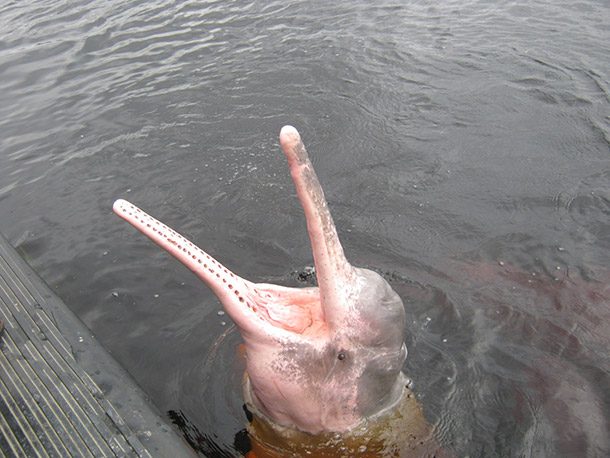 Source: https://www.worldwildlife.org/species/amazon-river-dolphin
Source: https://www.worldwildlife.org/species/amazon-river-dolphin Also known as the Pink Dolphin, the Amazon River Dolphin is only found in freshwater of the Amazon and Orinoco river basins. It’s a relatively abundant species but is currently considered vulnerable due to man-made dams.
Ladoga Seal
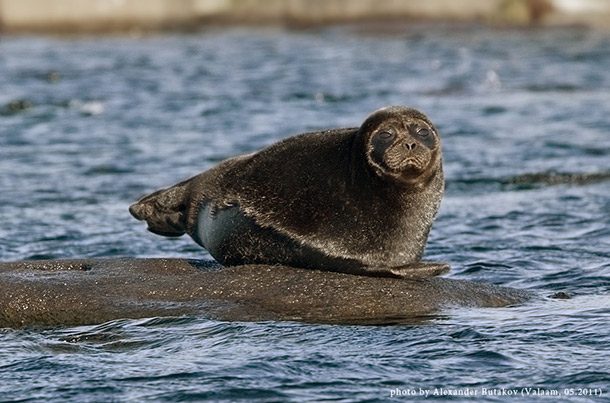 Source: http://www.nmfs.noaa.gov/pr/species/mammals/seals/ringed-seal.html
Source: http://www.nmfs.noaa.gov/pr/species/mammals/seals/ringed-seal.html The Ladoga Seal, also called the Ringed Seal, is the most common and smallest seal in the Arctic.
North American Beaver
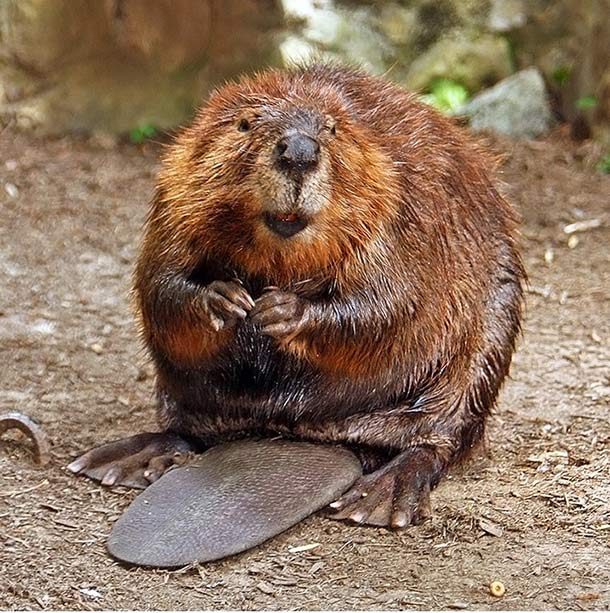 Source: https://americanexpedition.us/learn-about-wildlife/north-american-beaver-facts-information-and-photos/
Source: https://americanexpedition.us/learn-about-wildlife/north-american-beaver-facts-information-and-photos/ A semi-aquatic rodent, the North American Beaver has transparent eyelids which help it see under water and very sharp teeth to chew wood and build its dams. They play an important part in the environment and help it thrive.
Amazonian Manatee
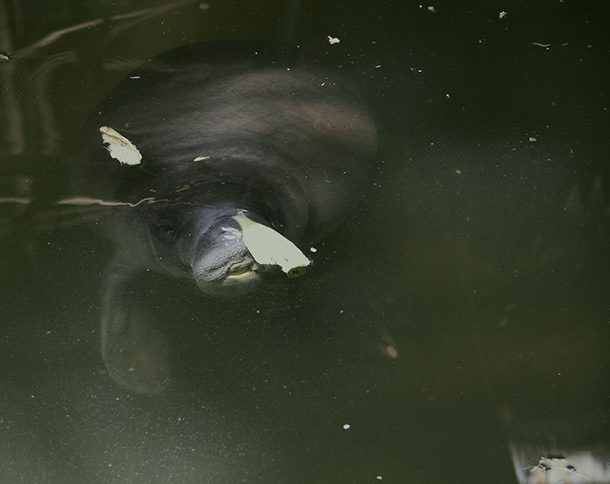 Source: http://www.arkive.org/amazonian-manatee/trichechus-inunguis/
Source: http://www.arkive.org/amazonian-manatee/trichechus-inunguis/ A bizarre looking aquatic mammal, the Amazonian Manatee has two forelimbs but no hind limbs. It’s the smallest of the Manatee species.
Eurasian Otter
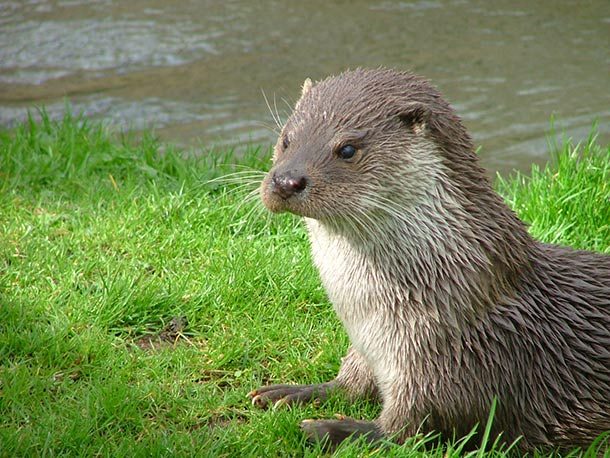 Source: http://www.waza.org/en/zoo/pick-a-picture/lutra-lutra
Source: http://www.waza.org/en/zoo/pick-a-picture/lutra-lutra The Eurasian Otter lives in freshwater habitats in Europe. Fish, frogs, and even birds are all part of their diet.
Capybara
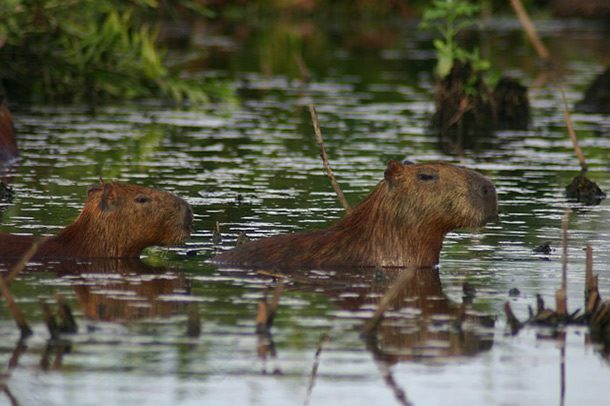 Source: http://animals.sandiegozoo.org/animals/capybara
Source: http://animals.sandiegozoo.org/animals/capybara Much like hippos in Africa, the Capybara loves to be in water and mud in the Andes and South American riverbanks. Also similar to hippos, its eyes, ears, and mouth are at the top of its head, allowing it to stay mostly below the water while it observes what’s going on above.
North American River Otter
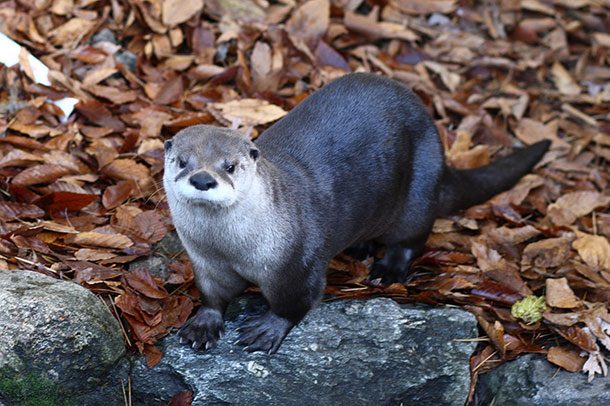 Source: http://www.nationalgeographic.com/animals/mammals/n/north-american-river-otter/
Source: http://www.nationalgeographic.com/animals/mammals/n/north-american-river-otter/ With water repellent fur, webbed feet, and long bodies, the North America River Otter is built to propel itself through its aquatic home. They can hold their breath underwater for up to eight minutes.
Platypus
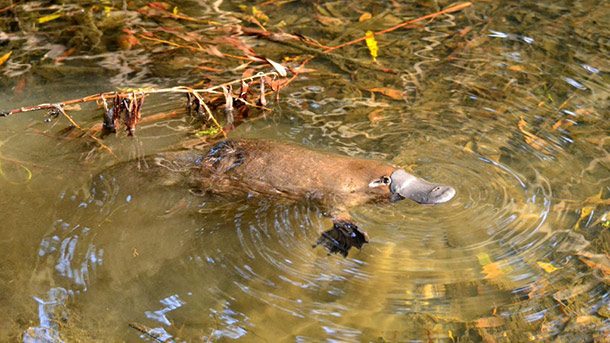 Source: http://www.nationalgeographic.com/animals/mammals/p/platypus/
Source: http://www.nationalgeographic.com/animals/mammals/p/platypus/ The first scientists to examine the Platypus thought they were being pranked. A combination of a duck, beaver, and otter, it is one of only two mammals that lay eggs. The males are also venomous.
Hippopotamus
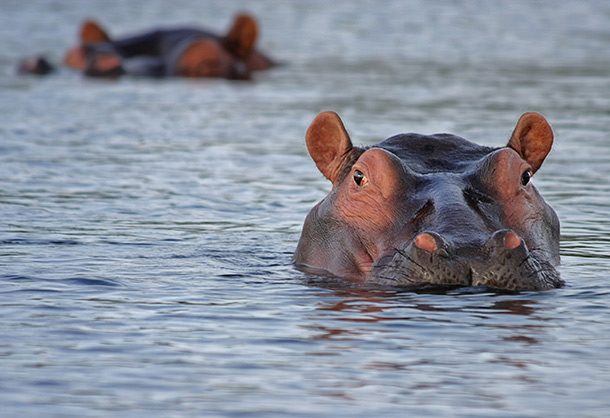 Source: http://www.nationalgeographic.com/animals/mammals/h/hippopotamus/
Source: http://www.nationalgeographic.com/animals/mammals/h/hippopotamus/ They love water so much that the Greeks named them “River Horse.” Hippos are good swimmers and can hold their breath for up to five minutes.
Indian Rhinoceros
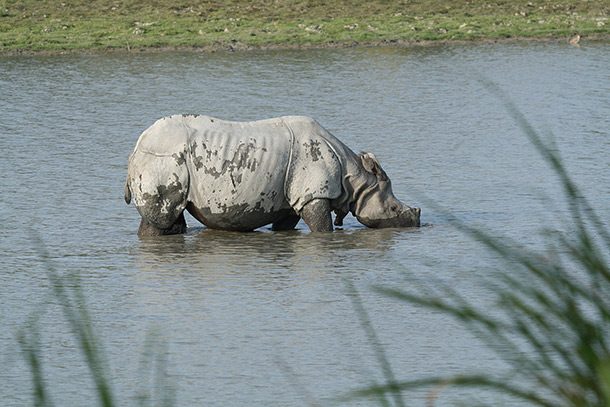 Source: http://www.nationalgeographic.com/animals/mammals/i/indian-rhinoceros/
Source: http://www.nationalgeographic.com/animals/mammals/i/indian-rhinoceros/ Considered a vulnerable species, the Indian Rhinoceros lives primarily in Northern India and Nepal. While they have significant differences from their African relatives, one of the most unique is their one horn.
Yapok
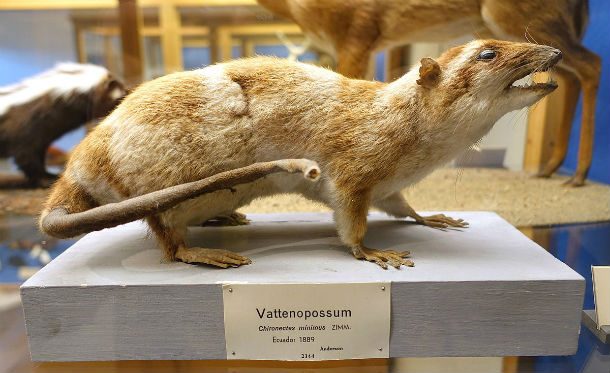 Source: http://thewebsiteofeverything.com/animals/mammals/Didelphimorphia/Didelphidae/Chironectes/Chironectes-minimus.html
Source: http://thewebsiteofeverything.com/animals/mammals/Didelphimorphia/Didelphidae/Chironectes/Chironectes-minimus.html The Yapok, also called the Water Opossum, is the only mammal where both the male and female have pouches. They’re considered “loners” and might only have a lifespan of up to three years.
American Water Shrew
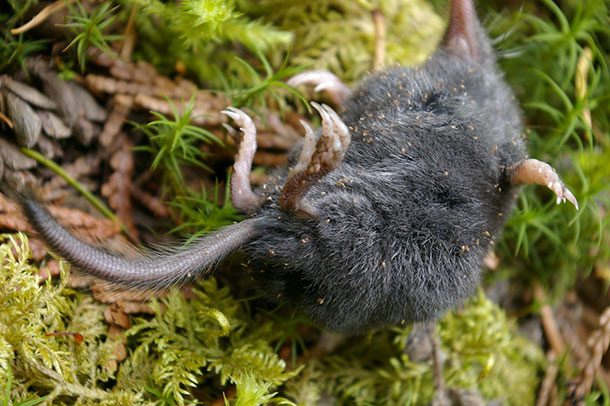 Source: http://www.arkive.org/water-shrew/sorex-palustris/
Source: http://www.arkive.org/water-shrew/sorex-palustris/ As the world’s smallest warm-blooded diving species, the American Water Shrew’s feet have hairs which help propel it through the water. Even for its size, it’s a relatively large type of shrew.
European Water Vole
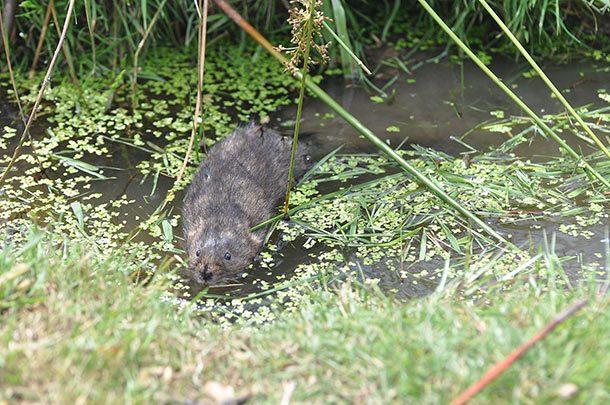 Source: http://www.bbc.co.uk/nature/life/European_Water_Vole
Source: http://www.bbc.co.uk/nature/life/European_Water_Vole Often mistaken for rats, the European Water Vole is widespread in slow-moving rivers and streams. Unfortunately, they prove to be rather easy prey for other predators.
Moose
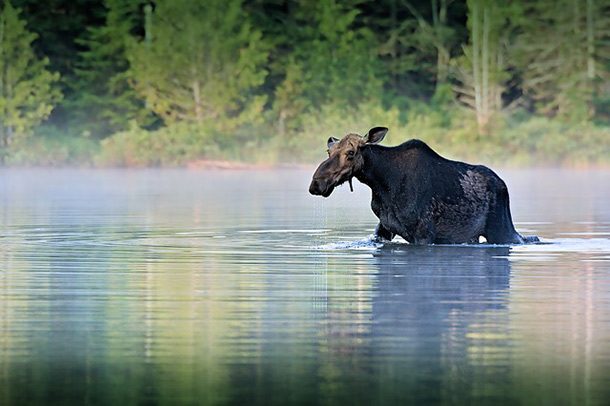 Source: http://www.nationalgeographic.com/animals/mammals/m/moose/
Source: http://www.nationalgeographic.com/animals/mammals/m/moose/ Moose are the largest of deer species and are frequently at home in the water. They even have been known to submerge completely.
Coypu
 Source: http://www.arkive.org/coypu/myocastor-coypus/
Source: http://www.arkive.org/coypu/myocastor-coypus/ An extremely large rodent, the Coypu is originally from South America. They mainly eat aquatic vegetation but have also been known to eat shellfish.
Walrus
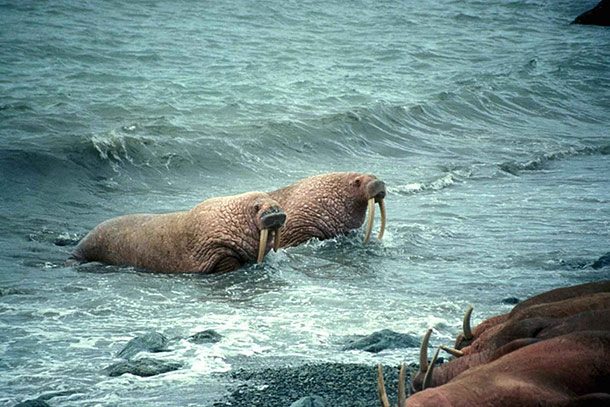 Source: http://animals.mom.me/list-aquatic-mammals-1770.html
Source: http://animals.mom.me/list-aquatic-mammals-1770.html Found in the Arctic Ocean, the walrus is an extremely social mammal with long tusks and whiskers that look like a mustache. While they spend a lot of time on land, they can dive 180 feet deep to get food.
Dugong
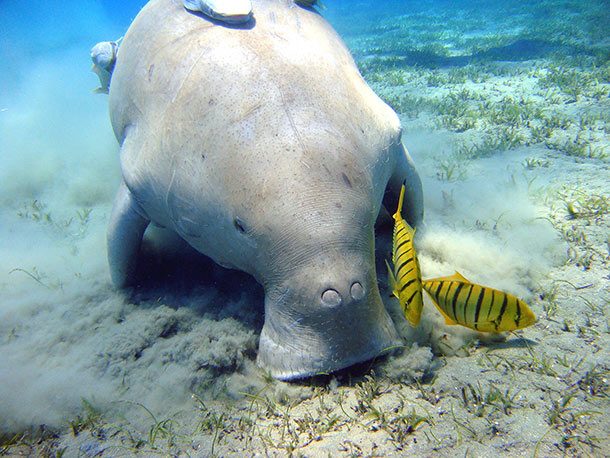 Source: http://www.nationalgeographic.com/animals/mammals/d/dugong/
Source: http://www.nationalgeographic.com/animals/mammals/d/dugong/ Similar in appearance and behavior to Manatees, the Dugong can be found from East Africa to Australia. They can stay underwater for six months before surfacing.
Leopard Seal
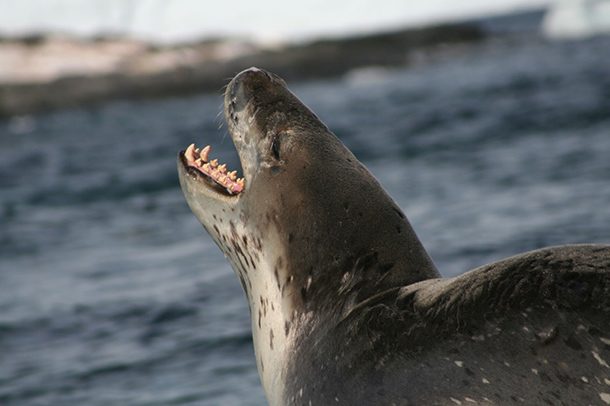 Source: http://www.nationalgeographic.com/animals/mammals/l/leopard-seal/
Source: http://www.nationalgeographic.com/animals/mammals/l/leopard-seal/ Much like a Leopard, the Leopard Seal is a fierce predator. They are incredible hunters and the only seal to eat warm-blooded prey.
Cuvier’s Beaked Whale
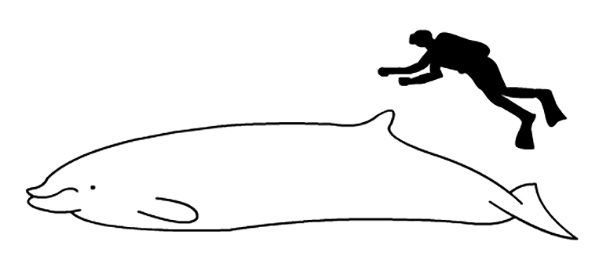 Source: http://us.whales.org/species-guide/cuviers-beaked-whale
Source: http://us.whales.org/species-guide/cuviers-beaked-whale The Cuvier’s Beaked Whale can be found in all the world’s oceans and even some of its seas. When they hunt, they can submerge to 2,000 meters below the surface of the water.
Vaquita
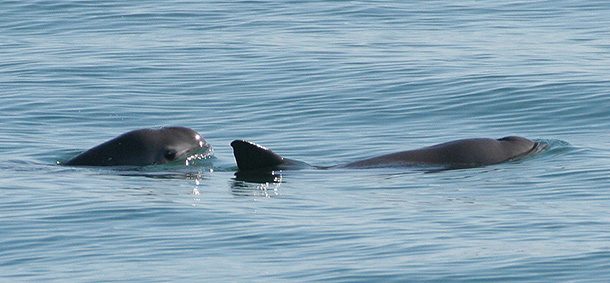 Source: https://www.worldwildlife.org/species/vaquita
Source: https://www.worldwildlife.org/species/vaquita On the edge of extinction, the Vaquita is a rare mammal not discovered until 1958. They are found in Mexico’s Gulf of California. Due to illegal fishing, the population has decreased drastically in recent years.
Humpback Whale
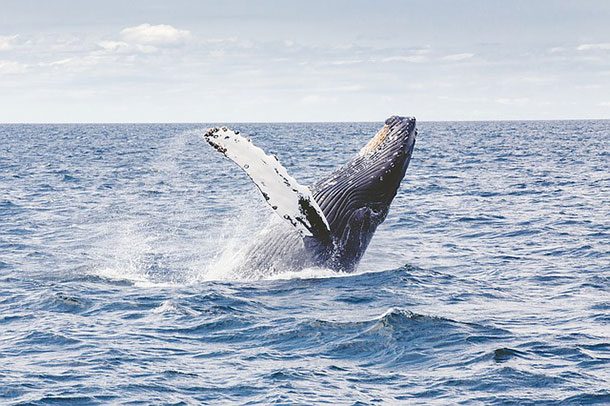 Source: http://www.nationalgeographic.com/animals/mammals/h/humpback-whale/
Source: http://www.nationalgeographic.com/animals/mammals/h/humpback-whale/ Known for their beautiful song that carries through the ocean, it’s thought Humpback Whales use it to communicate. They weigh about 40 tons and are 48 to 62 feet (14 to 19 meters) in size; despite their size, they still are powerful swimmers that migrate long distances every year.
Polar Bear
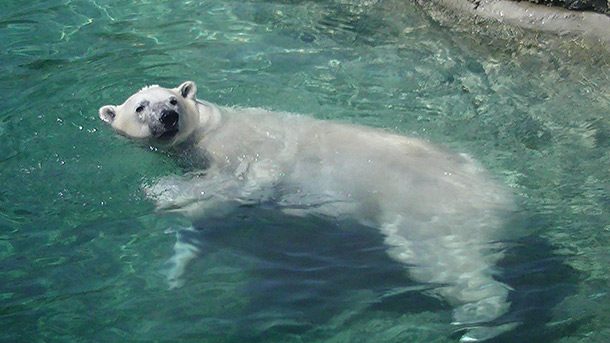 Source: https://www.worldwildlife.org/species/polar-bear
Source: https://www.worldwildlife.org/species/polar-bear Believe it or not, polar bears are considered aquatic mammals as well. With a thick layer of body fat and a water-repellent coat, they are well insulated from the cold air and water. They’re also pretty good swimmers, keeping a pace of 6 miles per hour (9.6 kph).
Harp Seal
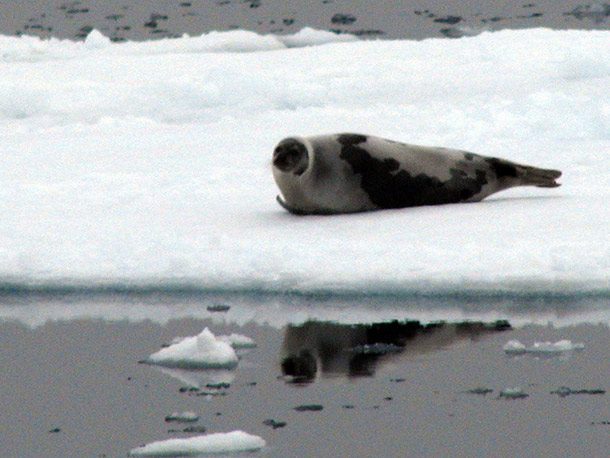 Source: http://www.nationalgeographic.com/animals/mammals/h/harp-seal/
Source: http://www.nationalgeographic.com/animals/mammals/h/harp-seal/ The harp seal loves to swim in the Arctic and Atlantic Oceans, remaining submerged for about fifteen minutes. They love to hunt and feed on fish and crustaceans.
Killer Whale
 Source: http://www.nationalgeographic.com/animals/mammals/o/orca/
Source: http://www.nationalgeographic.com/animals/mammals/o/orca/ Also known as Orcas, Killer Whales are the largest of the dolphins and the most powerful predators, feeding on other marine mammals. They’ve been known to grab seals right off the ice.
Bottlenose Dolphin
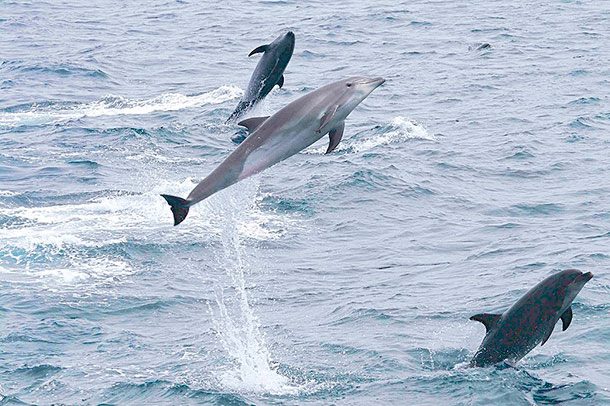 Source: http://www.nationalgeographic.com/animals/mammals/c/common-bottlenose-dolphin/
Source: http://www.nationalgeographic.com/animals/mammals/c/common-bottlenose-dolphin/ Of course, everyone knows and loves the bottlenose dolphin. Using echolocation, dolphins can track their prey with expert precision. They’re also known for their high intelligence.
Lists Going Viral Right Now
Photo: 25. Jorge Andrade, Amazon river dolphin 4, CC BY 2.0, 24. Alexander Butakov, The freshwater ringed seals. lake Ladoga, CC BY-SA 3.0, 23. Steve from washington, dc, usa, American Beaver, CC BY-SA 2.0, 22. Dirk Meyer, Amazonian manatee (Trichechus inunguis), CC BY-SA 4.0, 21. Catherine Trigg, Otter in Southwold, CC BY 2.0, 20. Pixabay.com (Public Domain), 19. Sage Ross, North American River Otter, Beardsley Zoo, 2009-11-06, CC BY-SA 3.0, 18. Klaus, Wild Platypus 4, CC BY-SA 2.0, 17. Pexels.com (Public Domain), 16. Dr. Raju Kasambe, Indian Rhinoceros Rhinoceros unicornis by Dr. Raju Kasambe IMG 0511 (18), CC BY-SA 4.0, 15. wikimedia commons (public domain), 14. Tim Gage, American Shrew-mole (Neurotrichus gibbsii), CC BY-SA 2.0, 13. Pixabay.com (Public Domain), 12. Pixabay.com (Public Domain), 11. Norbert Nagel, Biberratte – Nutria – coypu – Myocastor coypus – ragondin – castor des marais – Mönchbruch – November 24th 2013 – 01, CC BY-SA 3.0, 10. Wikipedia Commons.com (Public Domain), 9. Julien Willem, Dugong Marsa Alam, CC BY-SA 3.0, 8. cyfer13, Leopard Seal, CC BY 2.0, 7. Chris_huh, Cuvier’s beaked whale size, CC BY-SA 3.0, 6. Wikipedia Commons.com (Public Domain), 5. Pixabay.com (Public Domain), 4. Adam Bishop, Polar bear at Toronto Zoo, CC BY-SA 3.0, 3. claumoho, Harp seal, CC BY 2.0, 2. Pixabay.com (Public Domain), 1. Gregory “”Slobirdr”” Smith, Common Bottlenose Dolphin (Tursiops truncatus) – Galapagos (2225816313), CC BY-SA 2.0



























